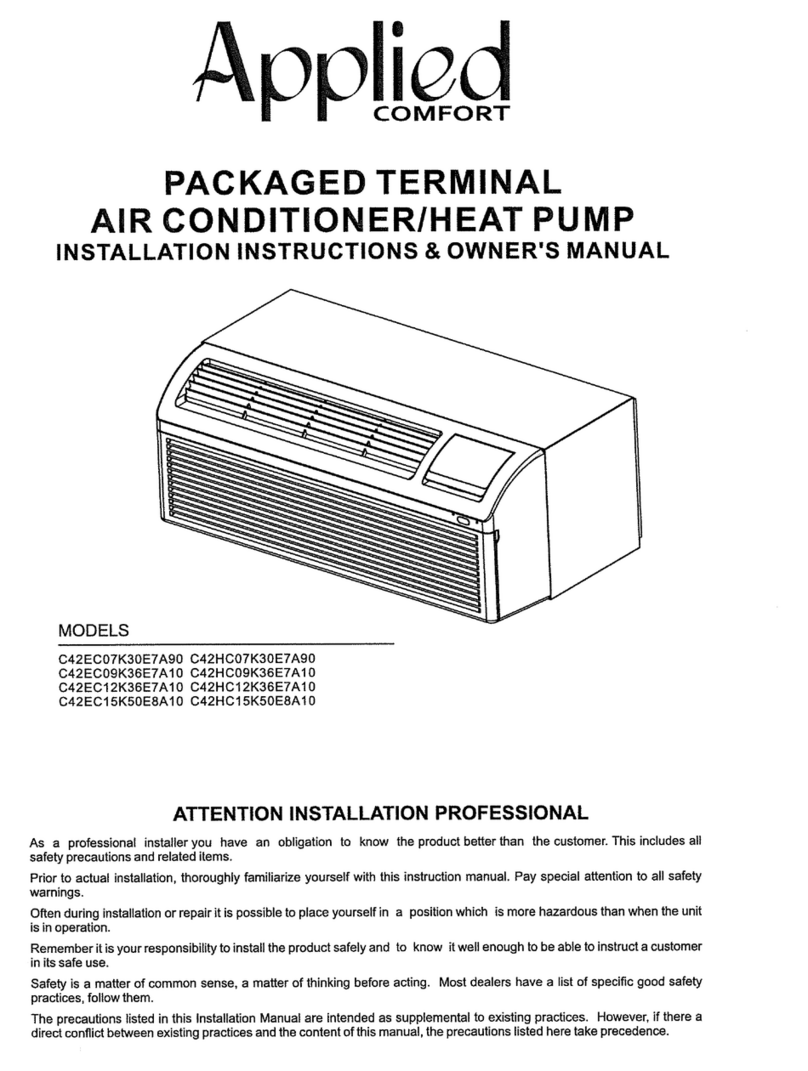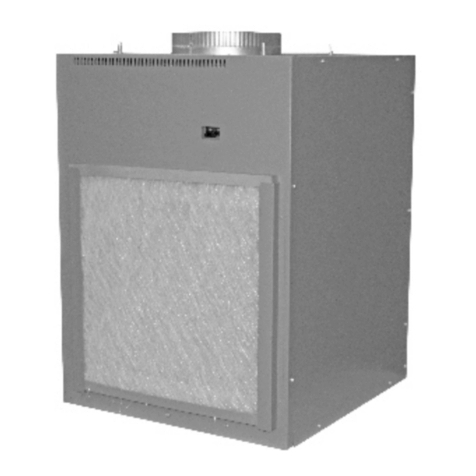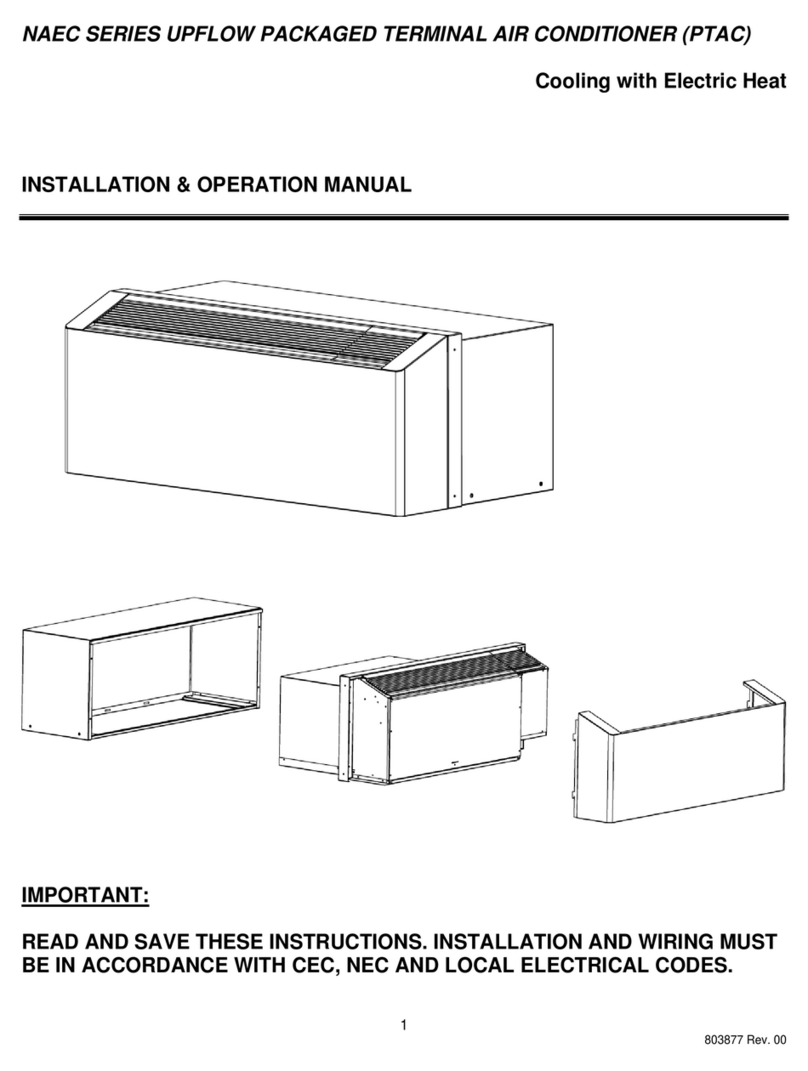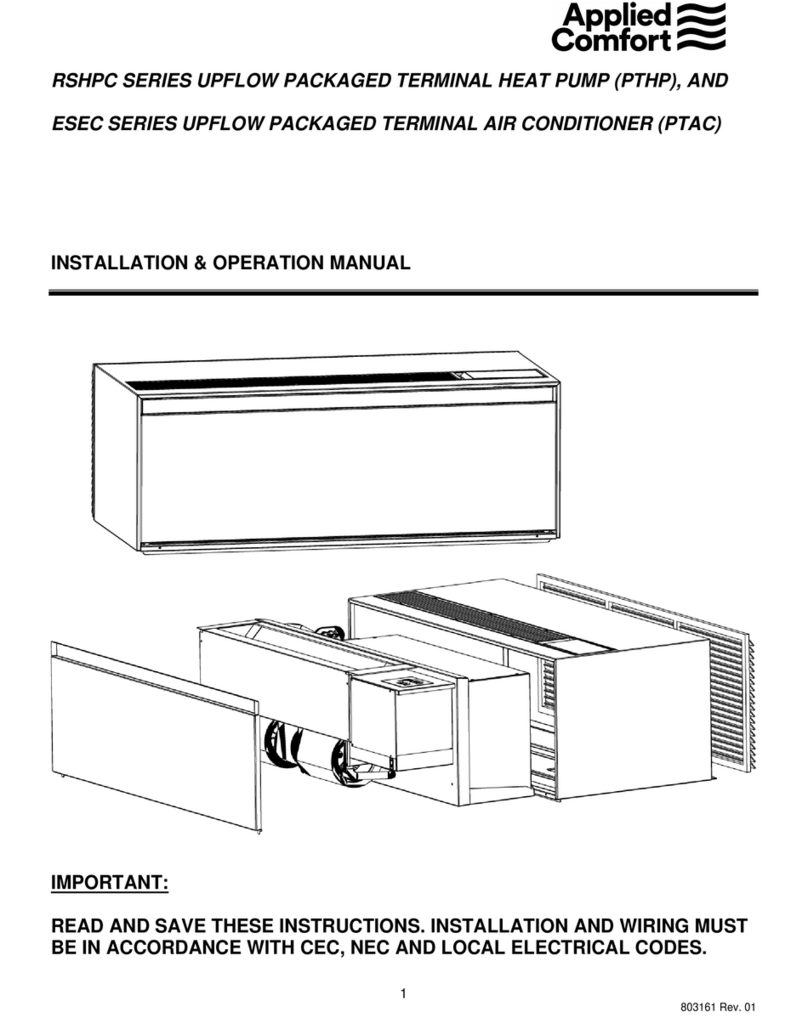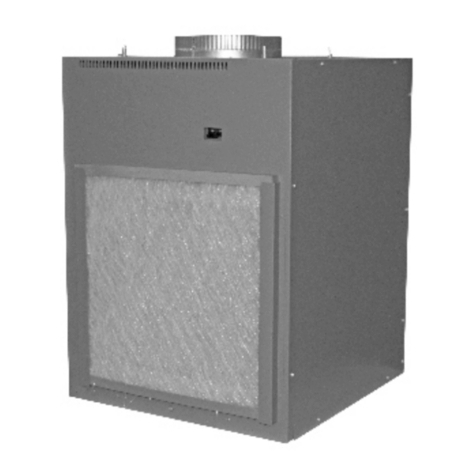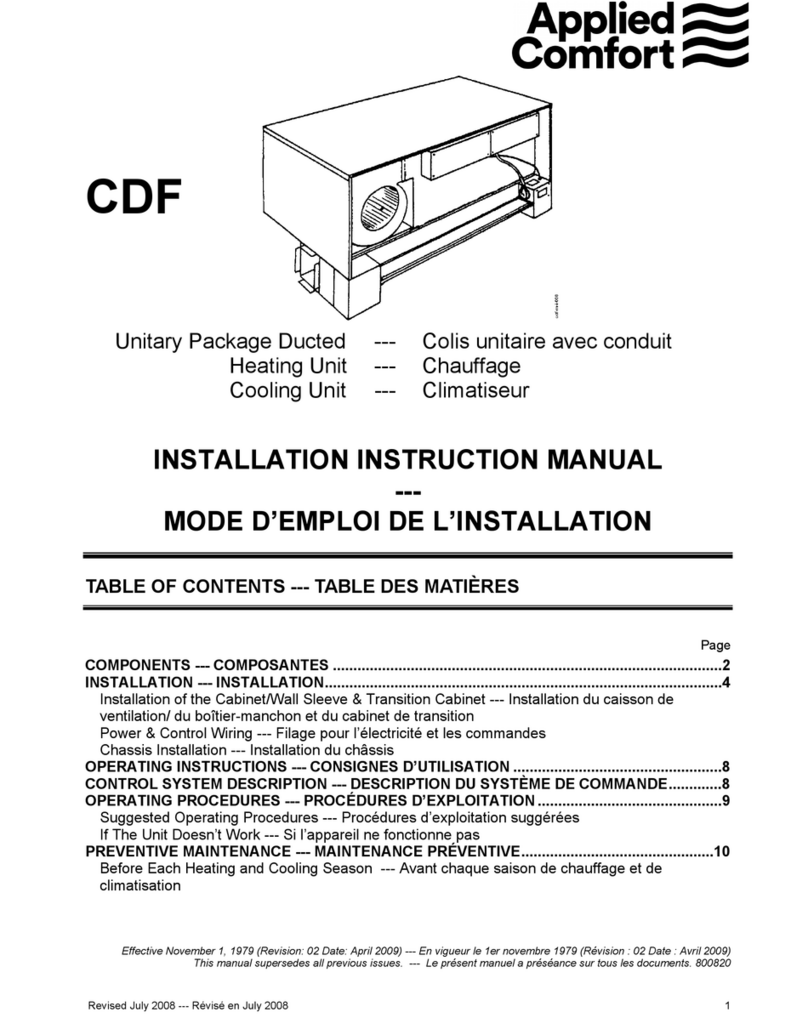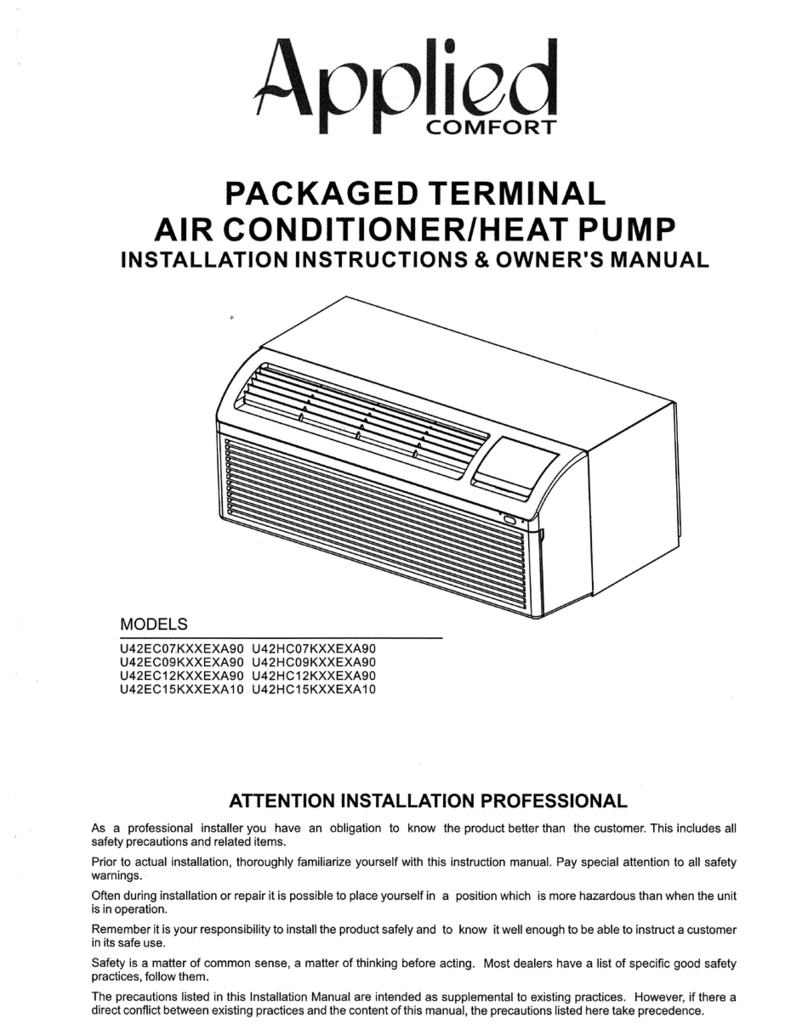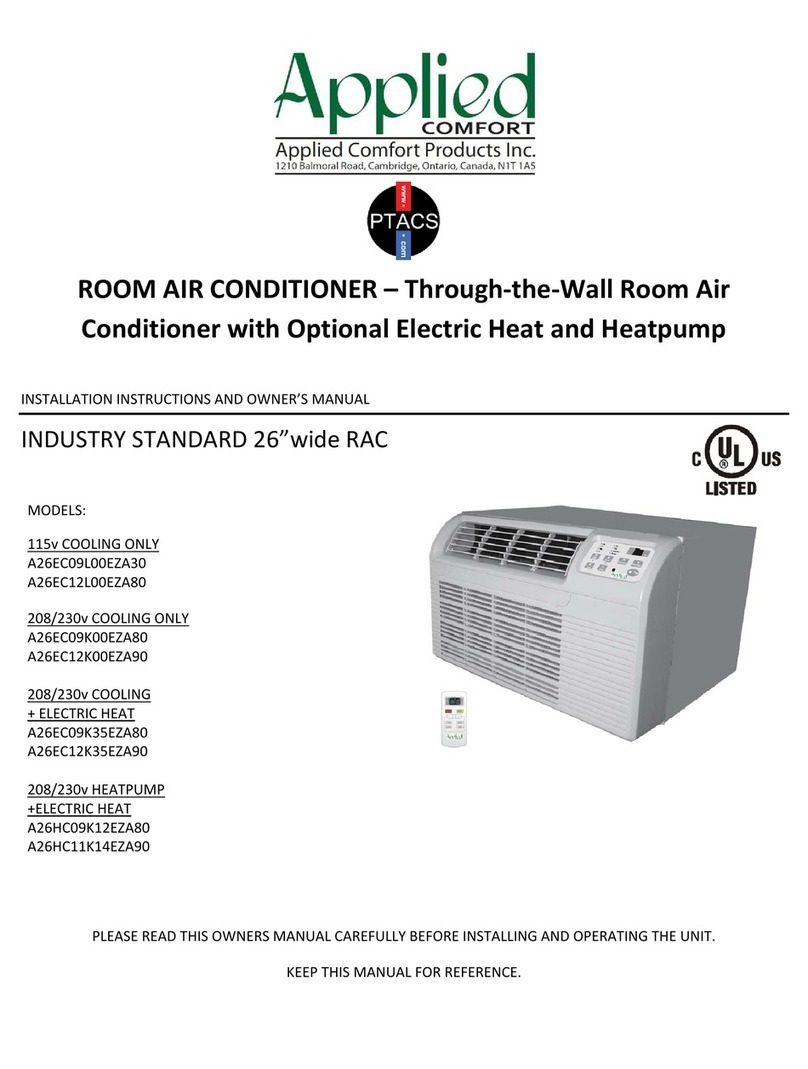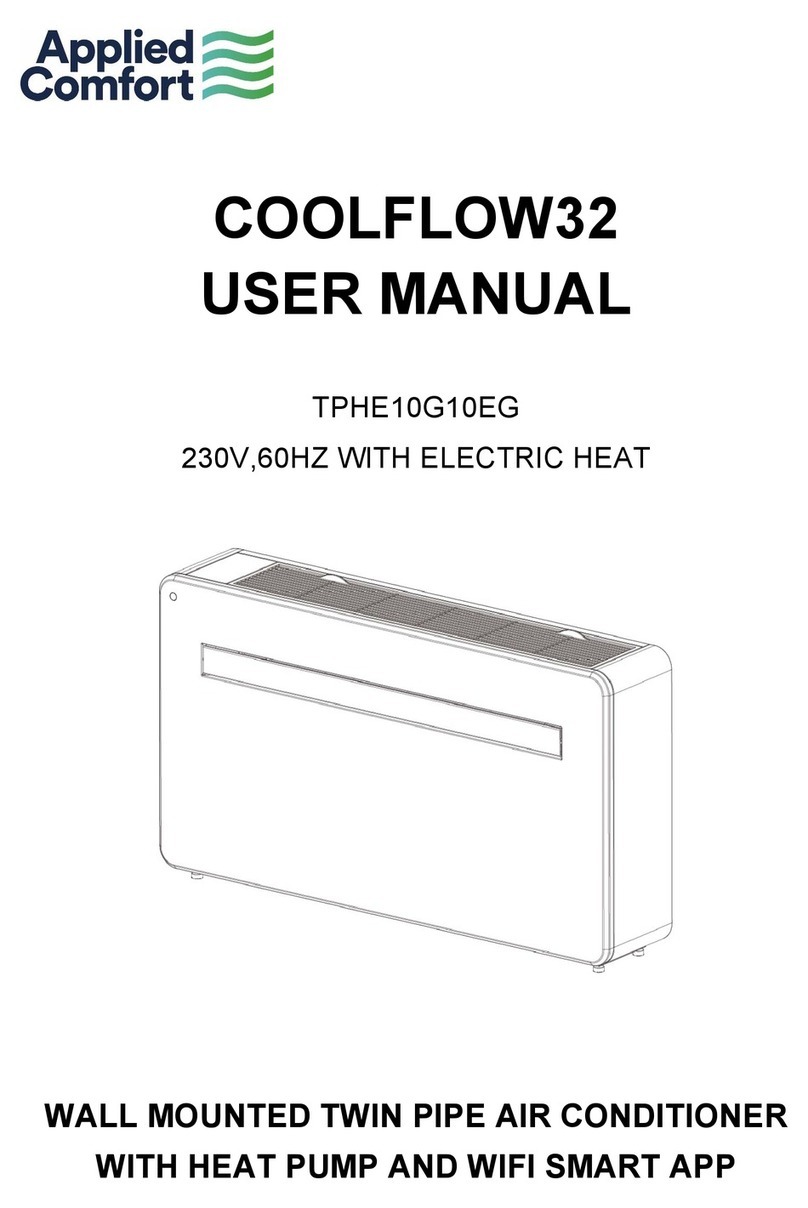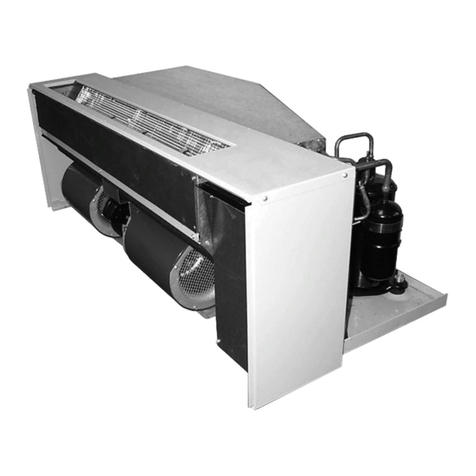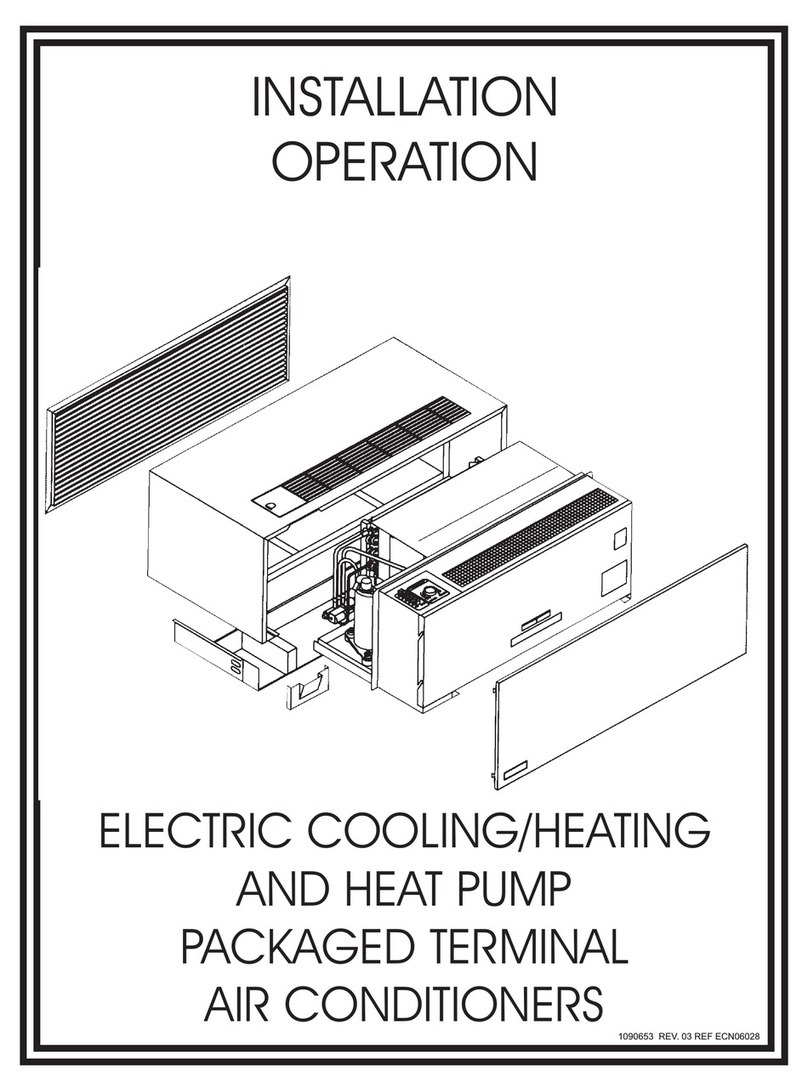
4802961 Rev. 00
CHASSIS INSTALLATION
1. Unpack heat/cool chassis from shipping carton. Check for
any shipping damage.
2. The chassis must be level from side-to-side and from front-
to-rear, once the chassis side flanges are drawn up tight to
the wall sleeve using the four flange screws. This can only
be achieved if the wall sleeve was installed level in all
directions, which they should have been according to the
Original Equipment Manufacturer’s instructions. If the
sleeves were originally installed with a slight slope in the
order of ¼” per foot downward from the indoor to outdoor
side, the chassis will still function properly, but the indoor
drain kit option will not work properly with it. A slope
downward from outdoor-to-indoor side is not permissible
and must be corrected before the unit is operated.
3. There are vertical air seals at the rear of the unit that
surround the condenser outlet that will engage and “seal”
against the rear grille. However, in some cases, such as
when an extra deep wall sleeve is used, or some other
variation is encountered that prevents the air deflectors
from sealing against the outdoor grille, then steps must be
taken to add anti-recirculation baffles to prevent hot
condenser air from short-circuiting back into the air intake
via the void space created in behind the outdoor grill.
4. Position the chassis in the cabinet and slide into place.
Keep the chassis level and square to prevent binding. The
chassis must be pushed into the wall sleeve until the side
flange seals of the chassis engage the sleeve. Alternately
tighten each of the four draw screws until the chassis is
drawn snugly into the sleeve. Do not over-tighten the draw
screws.
5. If the unit is equipped with electronic controls and
touchpad, locate the 24 Volt wiring harness coiled beneath
the control box. The harness is employed if in one or both
of these situations exist; one, if a remote 24 Volt AC wall
thermostat will be used, and two, if a 24 Volt AC aquastat
will be used. If either of these situations exist, connect the
multi-wire 24 volt wiring harness to the mating plug
protruding beneath the control box, as applicable,
following the detailed instructions on the wiring diagram
affixed to the specific unit being installed. Insulated crimp-
on connectors are provided at the end of every connection
lead to facilitate connections/insulation. If an aquastat
will be not be used, connect the ends (blue/orange) of
the aquastat leads together to permanently complete
the aquastat circuit.
6. If the unit is equipped with mechanical knob controls and
touchpad, this variation cannot be adapted to work with a
remote thermostat. Locate the 24 VAC aquatsat output
connector beneath the control box. A mating connector and
6 feet of wire leads are supplied to connect to an aquastat
switch if desired. The leads can be shortened as required. If
an aquastat will not be used, connect the ends
(orange/orange) of the aquastat leads together with a
field-supplied insulated connector to permanently
complete the aquastat circuit.
7. For all control variations, two 24 VAC hydronic valve
output connectors are provided – one under the control
box, and one at the bottom of the left side panel. A mating
connector and 2 feet of wire leads are supplied to connect
to a 24 VAC hydronic valve. The units can accommodate a
normally-open NO or a normally-closed NC hydronic
valve.
NO or NC is selected by a switch. The NO/NC switch is
located on the bottom front edge of the control box for
mechanical knob control units and is accessible to the user
once the room enclosure front panel is removed.
The NO/NC switch is located in the high voltage wiring
compartment as a DIP switch on the electronic control
equipped units, and is factory set to NO. The setting can be
changed to NC in the field, but only by qualified service
personnel.
WARNING: The NO/NC conversion procedure involves
exposure to high voltage electrical circuits in the control box
in order to make the necessary change to the DIP switch, and
must be performed by qualified service personnel. Failure to
do so could result in property damage, personal injury or
death. Disconnect electric power to the unit before servicing.
8. Plug the heat/cool chassis cord into the power receptacle
located either in the subbase or the wall, as applicable.
9. Install the front panel and secure it with the two retaining
screws located in its bottom corners.
WARNING: Operating the unit without the filter in place
can not only damage the unit, but also expose the user to a
hazard from rotating parts, potentially resulting in bodily
injury. The filter is intended to be removable only with the
use of a tool. Always remember to re-install the filter and
filter retaining clip after servicing the chassis, or
replacing/cleaning the filters.
10. Wipe unit cabinet/wall sleeve to remove dirt, etc.
11. The unit is now ready for operation, when supplied with
power from the distribution panel and wired to a remote
thermostat (if applicable).
